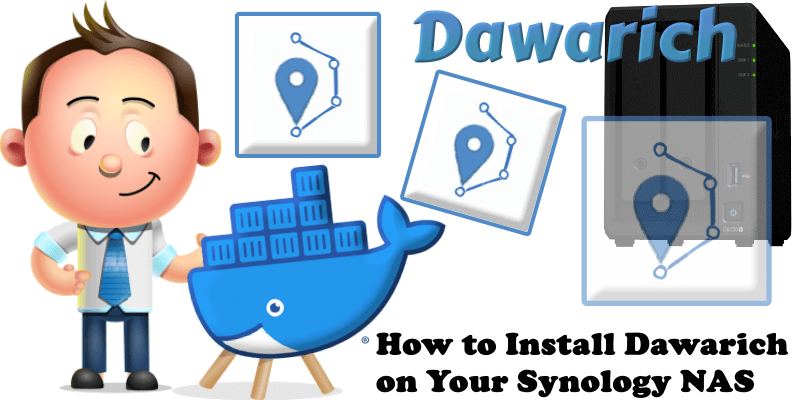
Dawarich is a self-hosted web app designed to replace Google Timeline (aka Google Location History). It enables you to: visualize your data on an interactive map, import your location history from Google Maps Timeline and Owntracks and explore statistics like the number of countries and cities visited, total distance traveled, and more. In this step by step guide I will show you how to install Dawarich on your Synology NAS using Docker & Portainer.
STEP 1
Please Support My work by Making a Donation.
STEP 2
Install Portainer using my step by step guide. If you already have Portainer installed on your Synology NAS, skip this STEP. Attention: Make sure you have installed the latest Portainer version.
STEP 3
Make sure you have a synology.me Wildcard Certificate. Follow my guide to get a Wildcard Certificate. If you already have a synology.me Wildcard certificate, skip this STEP.
STEP 4
Go to Control Panel / Login Portal / Advanced Tab / click Reverse Proxy. Follow the instructions in the image below.
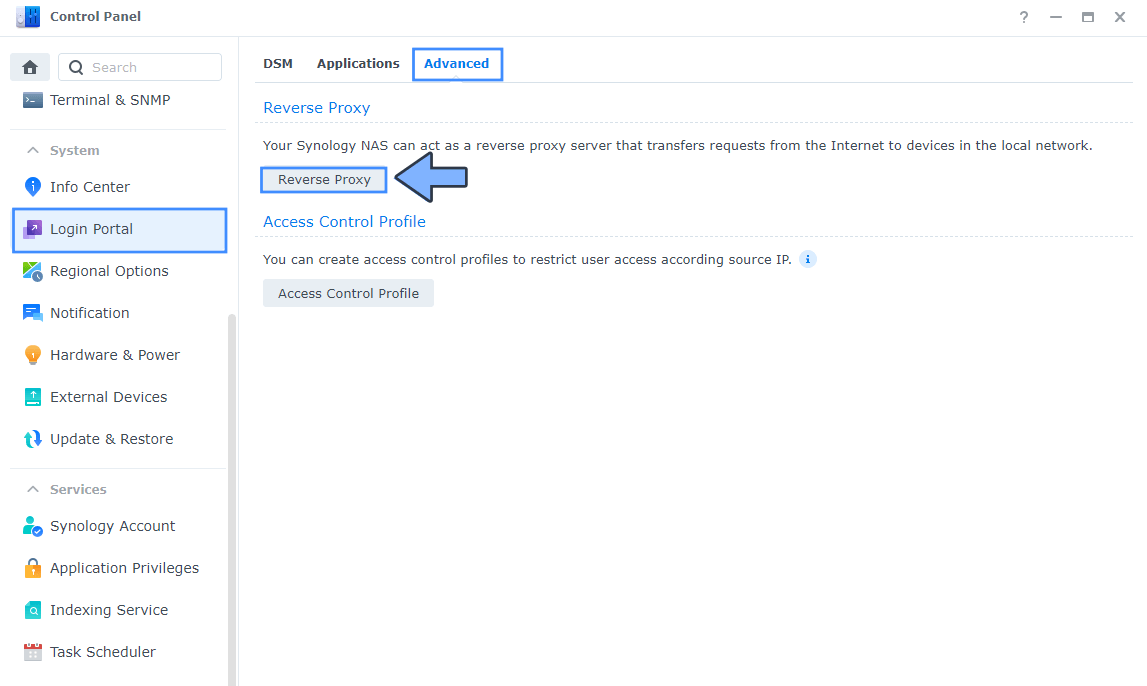
STEP 5
Now click the “Create” button. Follow the instructions in the image below.
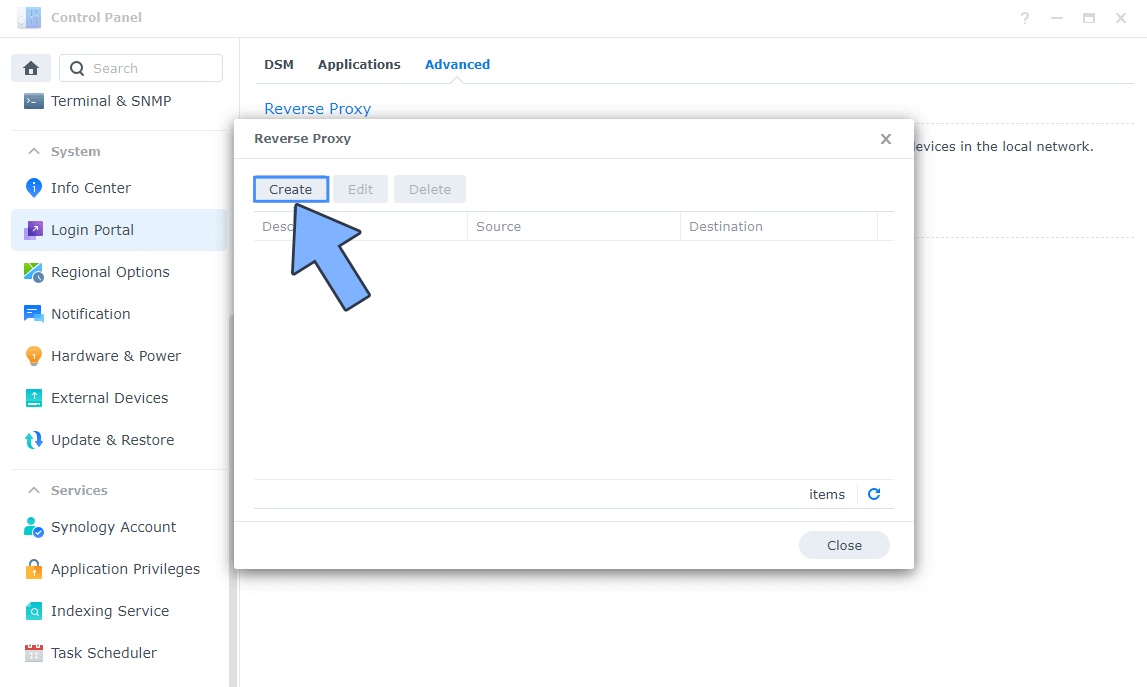
STEP 6
After you click the Create button, the window below will open. Follow the instructions in the image below.
On the General area, set the Reverse Proxy Name description: type in Dawarich. After that, add the following instructions:
Source:
Protocol: HTTPS
Hostname: dawarich.yourname.synology.me
Port: 443
Check Enable HSTS
Destination:
Protocol: HTTP
Hostname: localhost
Port: 3639
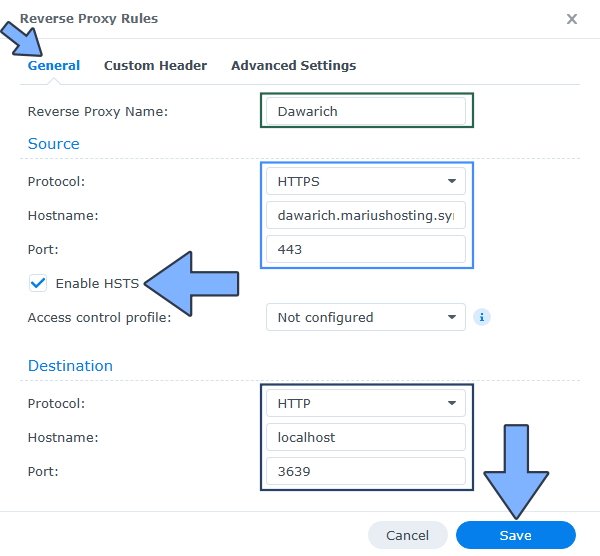
STEP 7
On the Reverse Proxy Rules, click the Custom Header tab. Click Create and then, from the drop-down menu, click WebSocket. After you click on WebSocket, two Header Names and two Values will be automatically added. Click Save. Follow the instructions in the image below.

STEP 8
Go to Control Panel / Network / Connectivity / Check Enable HTTP/2 then click Apply. Follow the instructions in the image below.
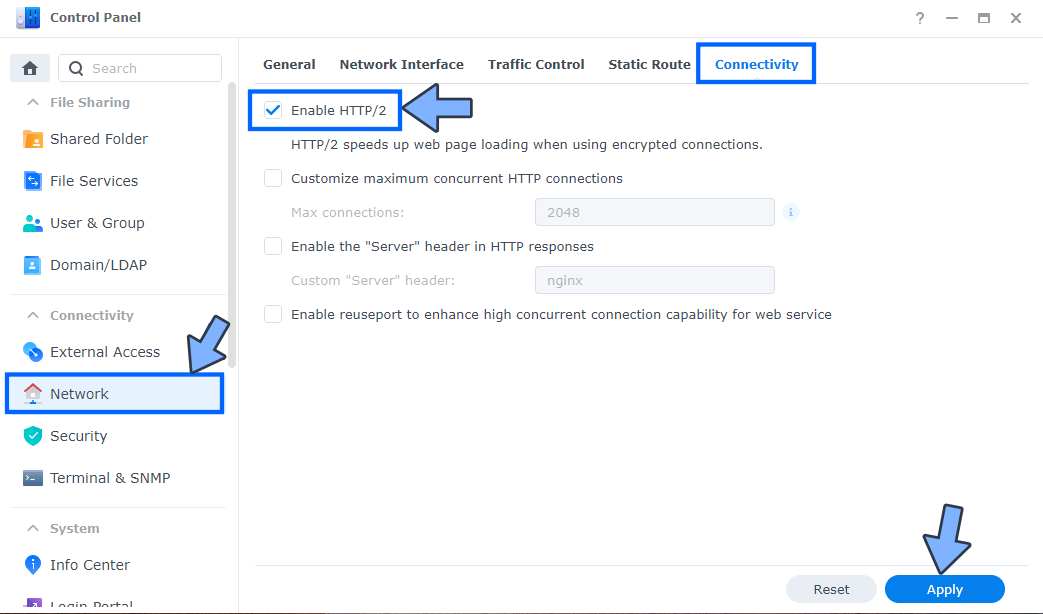
STEP 9
Go to Control Panel / Security / Advanced tab/ Check Enable HTTP Compression then click Apply. Follow the instructions in the image below.
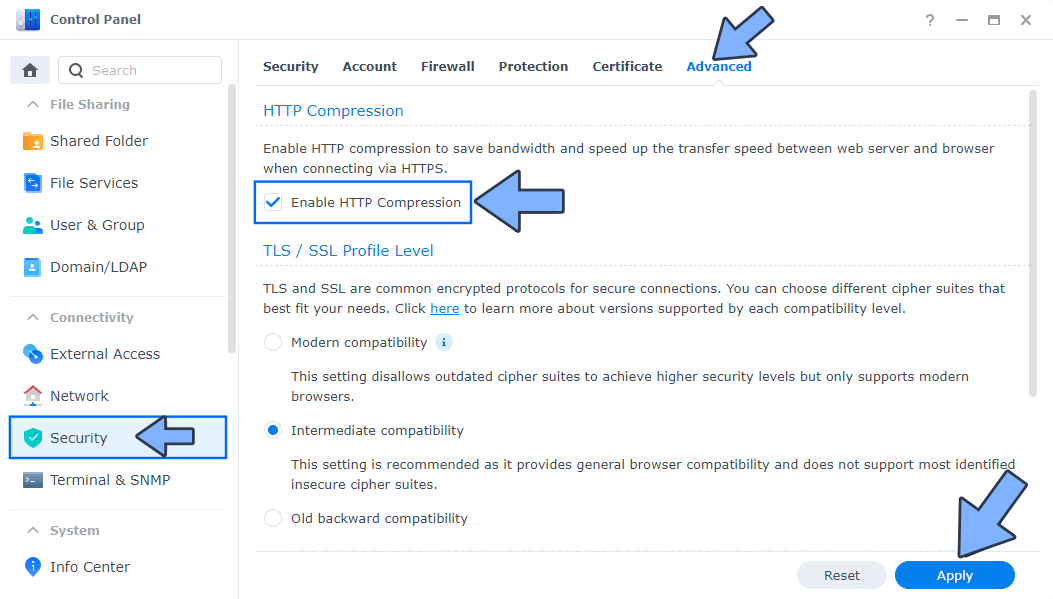
STEP 10
Go to File Station and open the docker folder. Inside the docker folder, create one new folder and name it dawarich. Follow the instructions in the image below.
Note: Be careful to enter only lowercase, not uppercase letters.
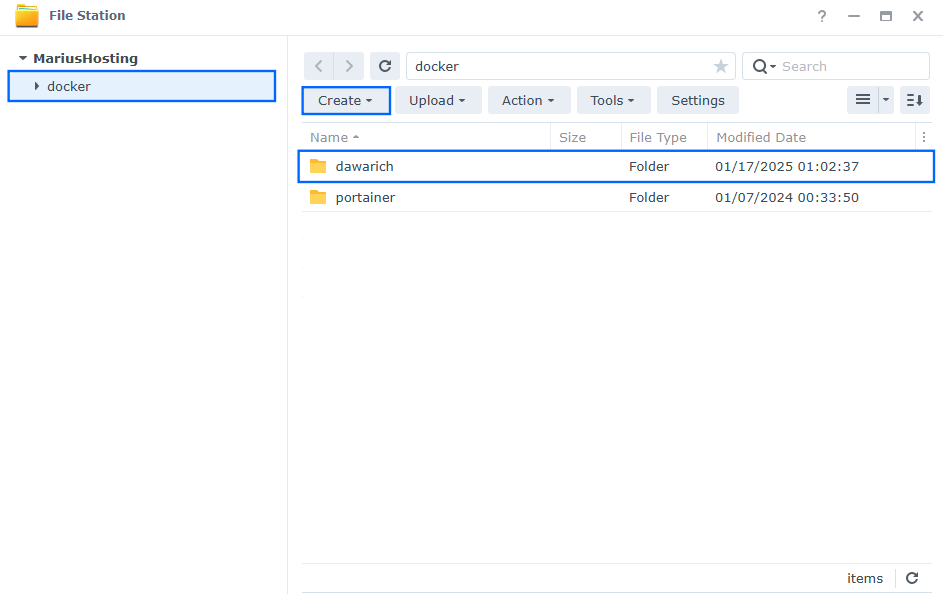
STEP 11
Now create six new folders inside the dawarich folder that you have previously created at STEP 10 and name them db, public, redis, shared, storage, watched. Follow the instructions in the image below.
Note: Be careful to enter only lowercase, not uppercase letters.
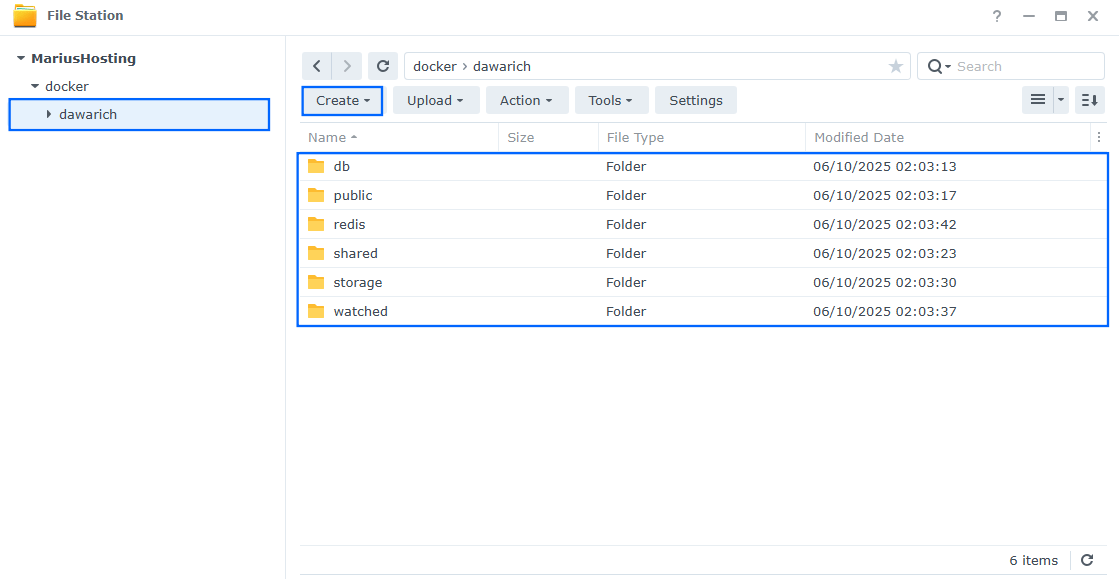
STEP 12
Log into Portainer using your username and password. On the left sidebar in Portainer, click on Home then Live connect. Follow the instructions in the image below.

On the left sidebar in Portainer, click on Stacks then + Add stack. Follow the instructions in the image below.

STEP 13
In the Name field type in dawarich. Follow the instructions in the image below.
services:
dawarich_db:
image: postgis/postgis:17-3.5-alpine
container_name: Dawarich-DB
hostname: dawarich_db
healthcheck:
test: ["CMD-SHELL", "pg_isready -U postgres -d dawarich_development"]
interval: 10s
retries: 5
start_period: 30s
timeout: 10s
volumes:
- /volume1/docker/dawarich/db:/var/lib/postgresql/data:rw
- /volume1/docker/dawarich/shared:/var/shared:rw
environment:
POSTGRES_USER: postgres
POSTGRES_PASSWORD: password
POSTGRES_DB: dawarich_development
shm_size: 1G
restart: on-failure:5
dawarich_redis:
image: redis:7.4-alpine
command: redis-server
container_name: Dawarich-REDIS
user: 1026:100
healthcheck:
test: ["CMD-SHELL", "redis-cli ping || exit 1"]
volumes:
- /volume1/docker/dawarich/redis:/data:rw
environment:
TZ: Europe/Bucharest
restart: on-failure:5
dawarich_app:
image: freikin/dawarich:latest
container_name: Dawarich
volumes:
- /volume1/docker/dawarich/public:/var/app/public:rw
- /volume1/docker/dawarich/watched:/var/app/tmp/imports/watched:rw
- /volume1/docker/dawarich/storage:/var/app/storage:rw
ports:
- 3639:3000
stdin_open: true
tty: true
entrypoint: web-entrypoint.sh
command: ['bin/rails', 'server', '-p', '3000', '-b', '::']
environment:
RAILS_ENV: development
REDIS_URL: redis://dawarich_redis:6379
DATABASE_HOST: dawarich_db
DATABASE_USERNAME: postgres
DATABASE_PASSWORD: password
DATABASE_NAME: dawarich_development
SELF_HOSTED: true
STORE_GEODATA: true
SECRET_KEY_BASE: dOxZYTTZgXKMHkqLBIQVImayQXAVWdzGBPuFJKggzcgvgPJPXpWzqzKaUOIOGGIr
APPLICATION_HOSTS: dawarich.yourname.synology.me
MIN_MINUTES_SPENT_IN_CITY: 60
TIME_ZONE: Europe/Bucharest
APPLICATION_PROTOCOL: http
DISTANCE_UNIT: km
PROMETHEUS_EXPORTER_ENABLED: false
PROMETHEUS_EXPORTER_HOST: 0.0.0.0
PROMETHEUS_EXPORTER_PORT: 9394
ENABLE_TELEMETRY: false # More on telemetry: https://dawarich.app/docs/tutorials/telemetry
logging:
driver: "json-file"
options:
max-size: "100m"
max-file: "5"
healthcheck:
test: ["CMD-SHELL", "wget -qO - http://127.0.0.1:3000/api/v1/health | grep -q '\"status\"\\s*:\\s*\"ok\"'"]
interval: 10s
retries: 30
start_period: 30s
timeout: 10s
depends_on:
dawarich_db:
condition: service_healthy
dawarich_redis:
condition: service_healthy
restart: on-failure:5
dawarich_sidekiq:
image: freikin/dawarich:latest
container_name: Dawarich-SIDEKIQ
healthcheck:
test: ["CMD-SHELL", "pgrep -f sidekiq"]
interval: 10s
retries: 30
start_period: 30s
timeout: 10s
volumes:
- /volume1/docker/dawarich/public:/var/app/public:rw
- /volume1/docker/dawarich/watched:/var/app/tmp/imports/watched:rw
- /volume1/docker/dawarich/storage:/var/app/storage:rw
stdin_open: true
tty: true
entrypoint: sidekiq-entrypoint.sh
command: ['sidekiq']
environment:
RAILS_ENV: development
REDIS_URL: redis://dawarich_redis:6379
DATABASE_HOST: dawarich_db
DATABASE_USERNAME: postgres
DATABASE_PASSWORD: password
DATABASE_NAME: dawarich_development
SECRET_KEY_BASE: dOxZYTTZgXKMHkqLBIQVImayQXAVWdzGBPuFJKggzcgvgPJPXpWzqzKaUOIOGGIr
APPLICATION_HOSTS: dawarich.yourname.synology.me
BACKGROUND_PROCESSING_CONCURRENCY: 10
APPLICATION_PROTOCOL: http
PROMETHEUS_EXPORTER_ENABLED: false
PROMETHEUS_EXPORTER_HOST: dawarich_app
PROMETHEUS_EXPORTER_PORT: 9394
SELF_HOSTED: true
STORE_GEODATA: true
logging:
driver: "json-file"
options:
max-size: "100m"
max-file: "5"
depends_on:
dawarich_db:
condition: service_healthy
dawarich_redis:
condition: service_healthy
dawarich_app:
condition: service_healthy
restart: on-failure:5
Note: Before you paste the code above in the Web editor area below, change the value numbers for user with your own UID and GID values. (Follow my step by step guide on how to do this.) 1026 is my personal UID value and 100 is my personal GID value. You have to type in your own values.
Note: Before you paste the code above in the Web editor area below, change the value for TZ. (Select your current Time Zone from this list.)
Note: Before you paste the code above in the Web editor area below, change the value for SECRET_KEY_BASE in both places. (Generate your own Random 64 length SECRET_KEY_BASE.)
Note: Before you paste the code above in the Web editor area below, change the value for APPLICATION_HOSTS in both places and type in your own synology.me DDNS without https:// at the beginning that you have previously created at STEP 6.
Note: Before you paste the code above in the Web editor area below, change the value for TIME_ZONE. (Select your current Time Zone from this list.)
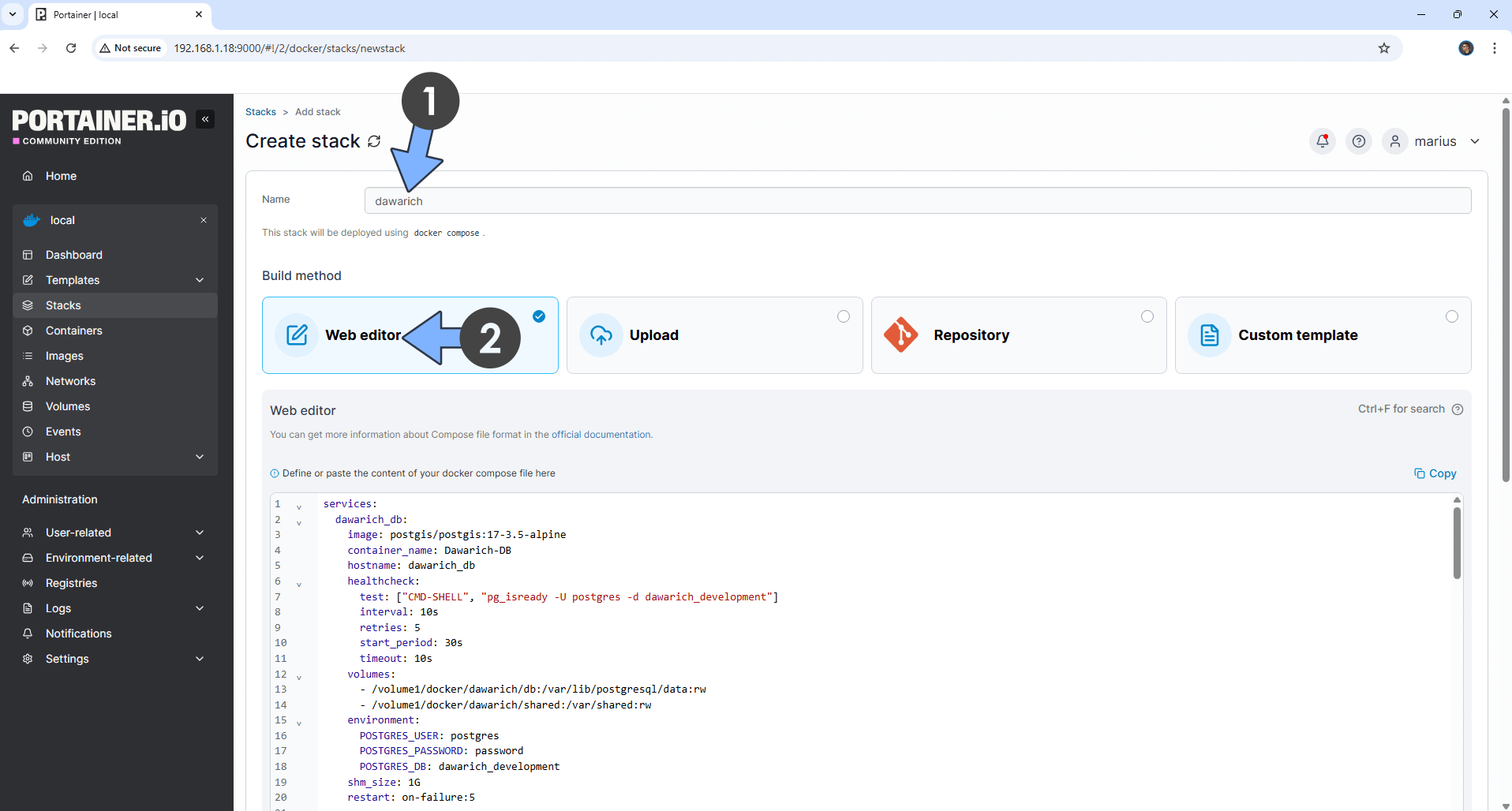
STEP 14
Scroll down on the page until you see a button called Deploy the stack. Click on it. Follow the instructions in the image below. The installation process can take up to a few minutes. It will depend on your Internet speed connection.
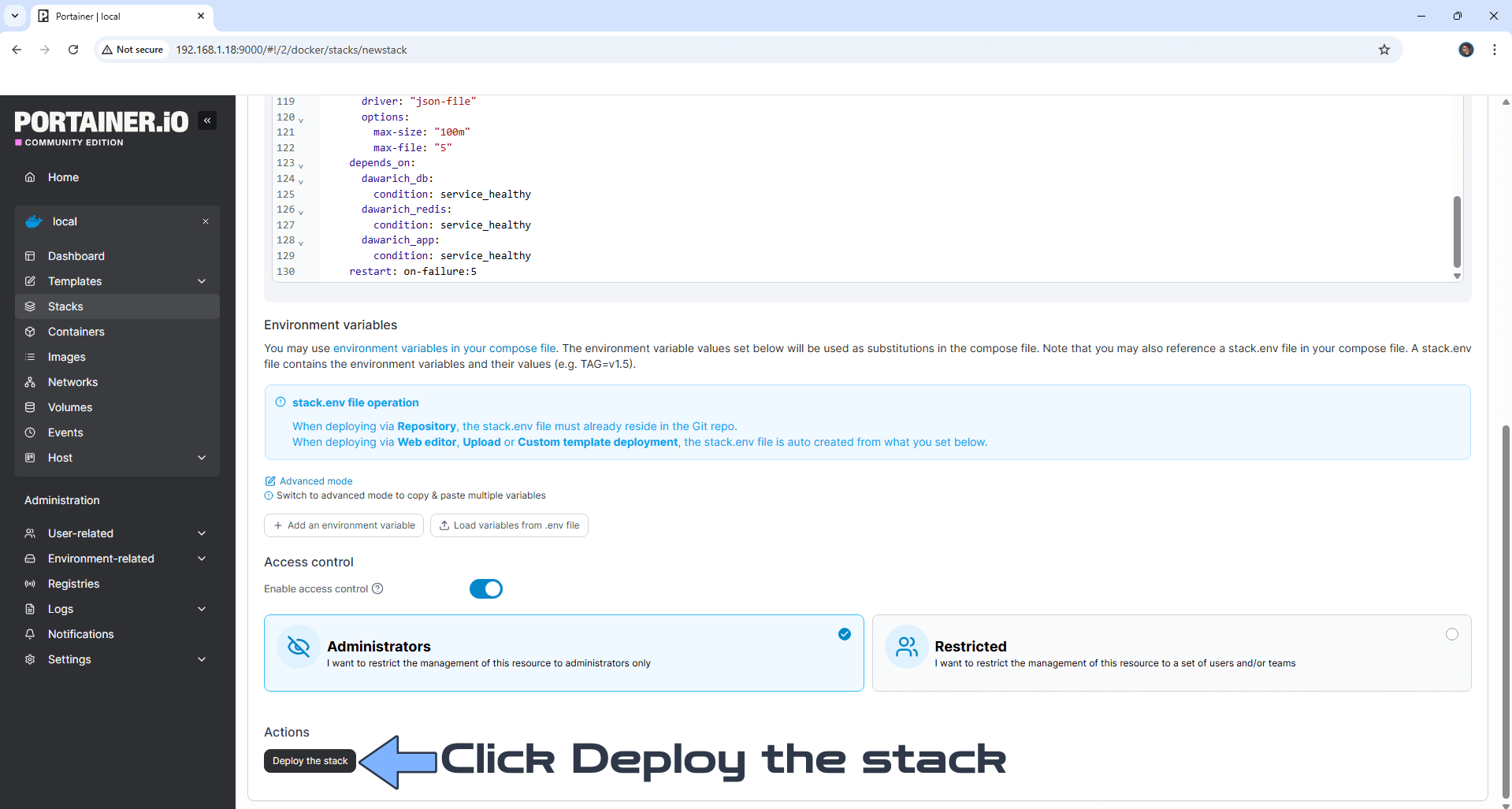
STEP 15
If everything goes right, you will see this message at the top right of your screen: “Success Stack successfully deployed“.

STEP 16
🟢Please Support My work by Making a Donation. Almost 99,9% of the people that install something using my guides forget to support my work, or just ignore STEP 1. I’ve been very honest about this aspect of my work since the beginning: I don’t run any ADS, I don’t require subscriptions, paid or otherwise, I don’t collect IPs, emails, and I don’t have any referral links from Amazon or other merchants. I also don’t have any POP-UPs or COOKIES. I have repeatedly been told over the years how much I have contributed to the community. It’s something I love doing and have been honest about my passion since the beginning. But I also Need The Community to Support me Back to be able to continue doing this work.
STEP 17
Please wait approximately 5 minutes or you will get a blank synology error page if you try to connect too soon. Now open your browser and type in your HTTPS/SSL certificate like this https://dawarich.yourname.synology.me that you have previously created at STEP 6. In my case it’s https://dawarich.mariushosting.synology.me If everything goes right, you will see the Dawarich Login page. Click Sign in. Follow the instructions in the image below.
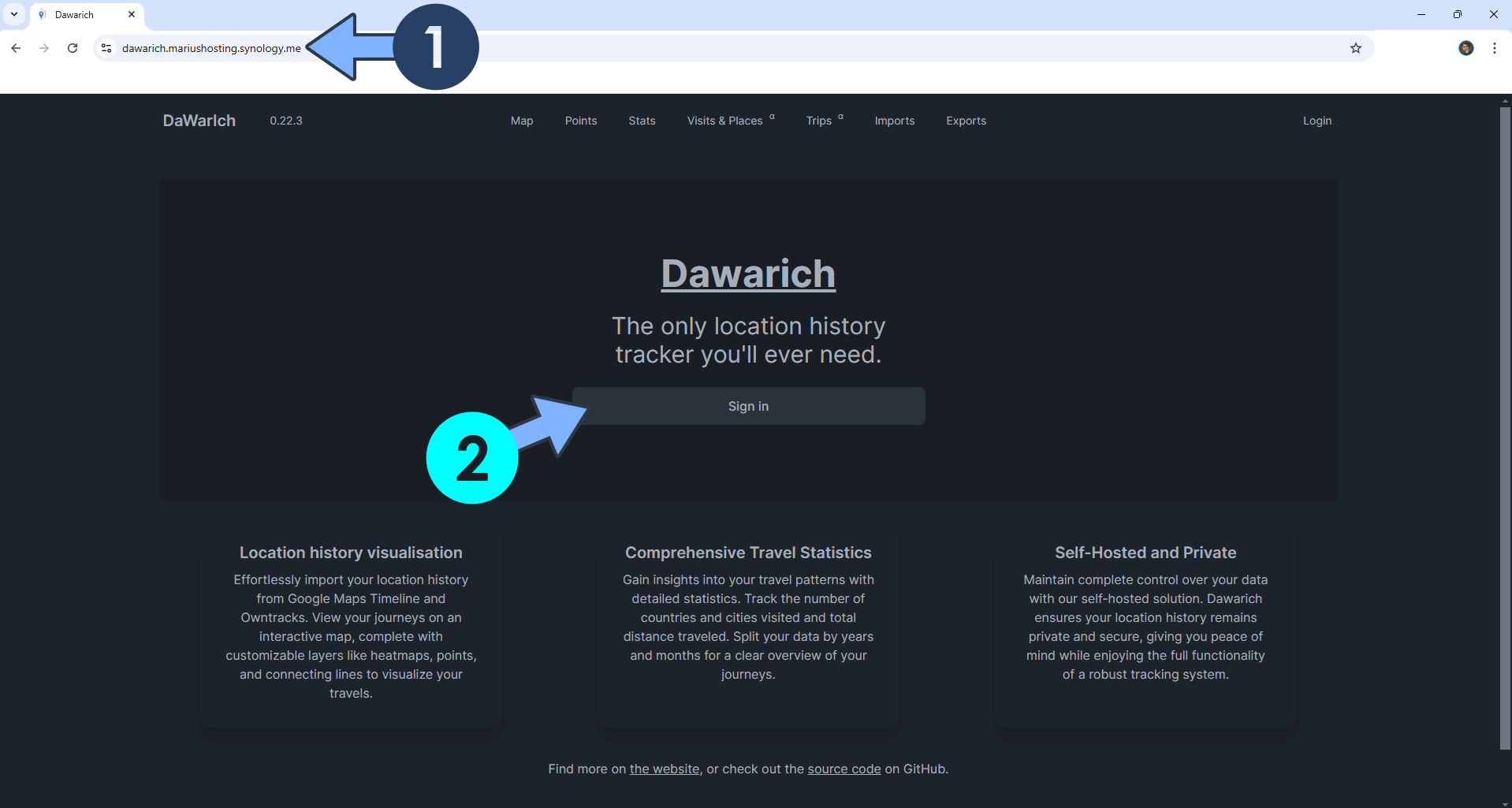
STEP 18
Type in the default Email address and Password, then click Log in. Follow the instructions in the image below.
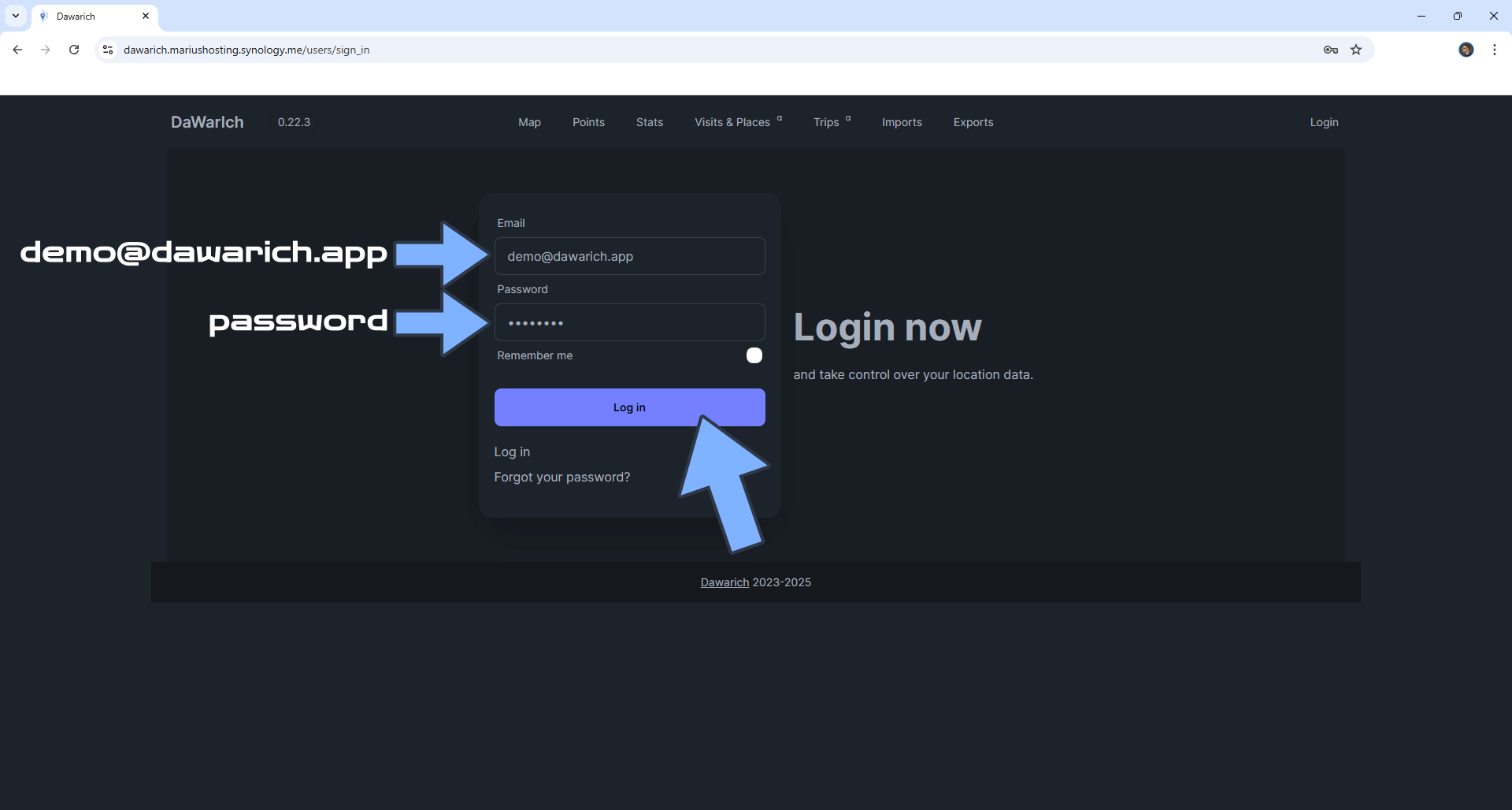
STEP 19
Change the default Email address and Password. At the top right of the page, click on the demo email address then Account. Change the default Email address and Password with your own credentials. Click Update. Follow the instructions in the image below.
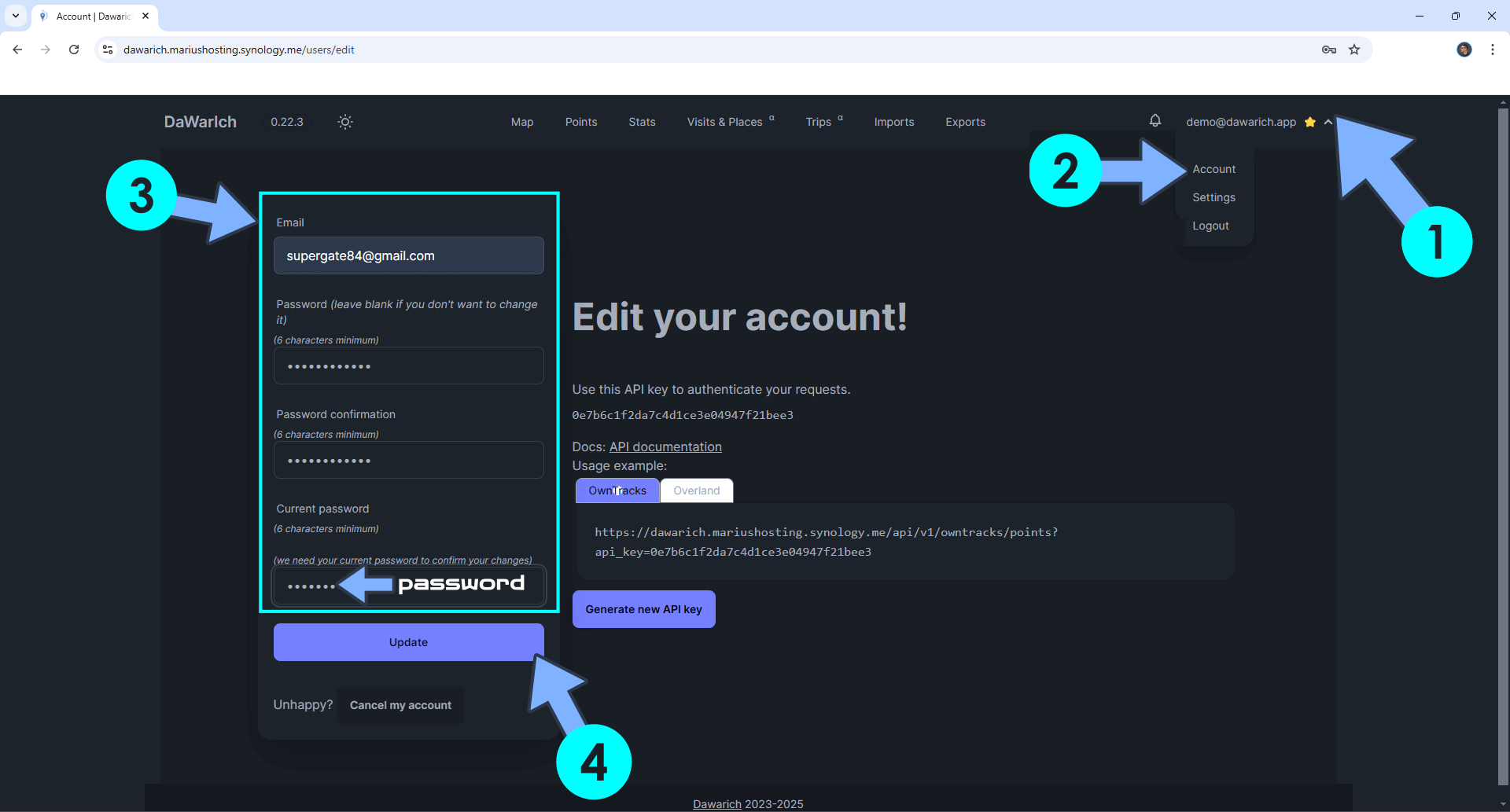
STEP 20
Your Dawarich Map at a glance!
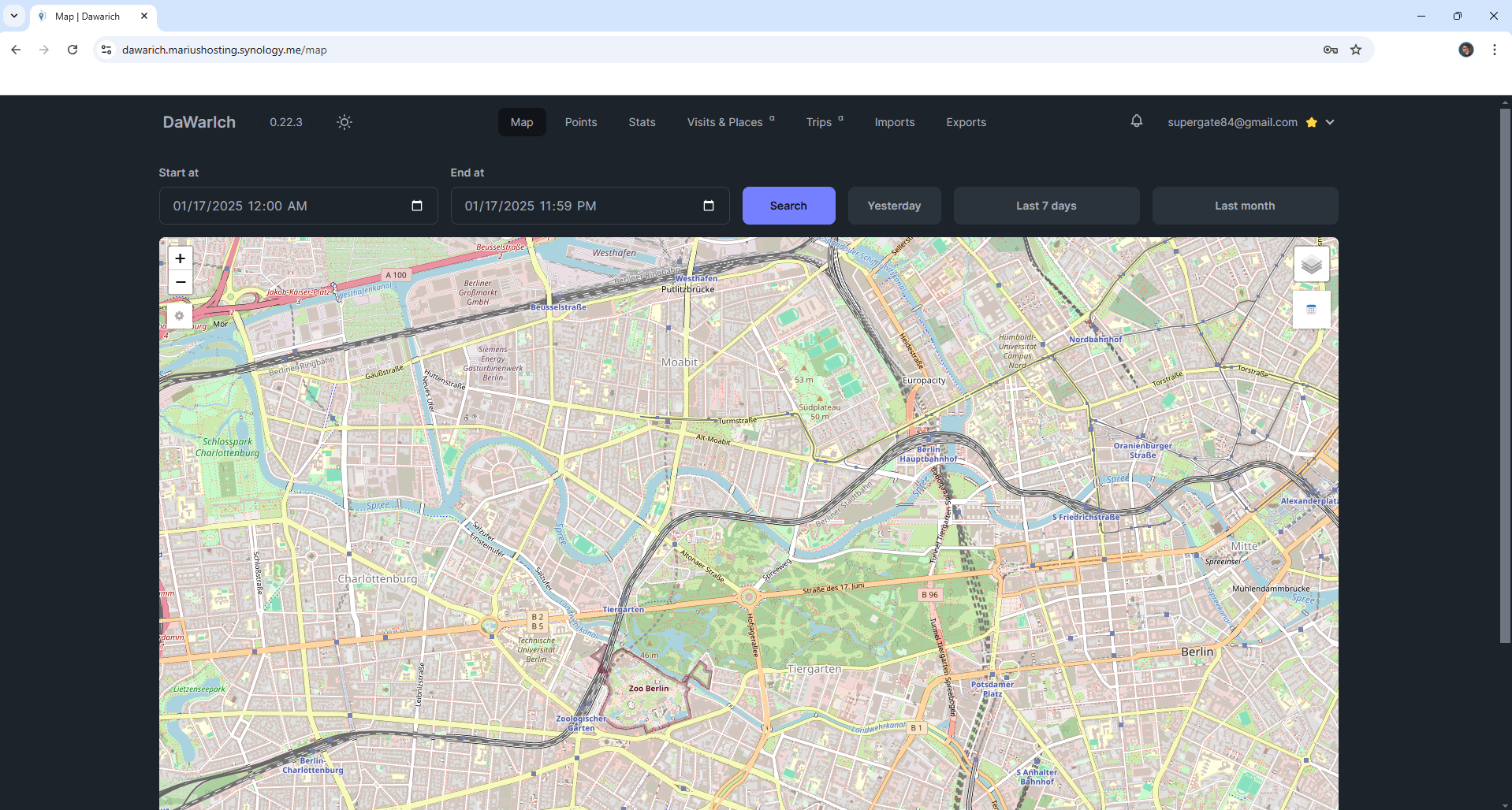
STEP 21
Add Immich or Photoprism integration. ⚠️Warning: You need to install Immich or Photoprism using my guide before you edit your integrations in Dawarich. At the top right of the page, click on your own email address, then Settings. Type in your own Immich URL address with the respective API KEY or your own Photoprism URL address with the respective API KEY, depends on your preference, then click Update. Follow the instructions in the image below.
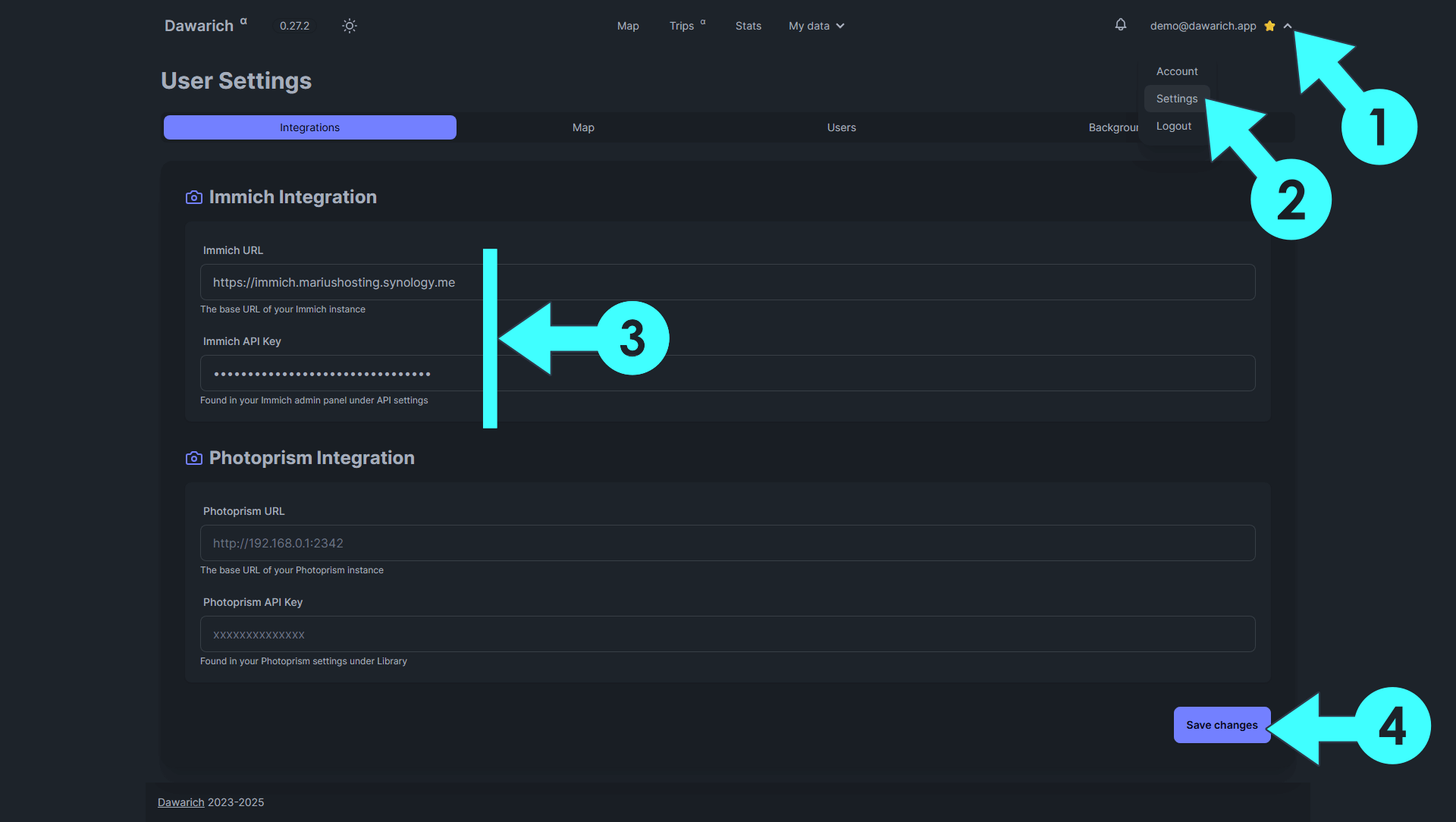
STEP 22
Your Dawarich app at a glance!
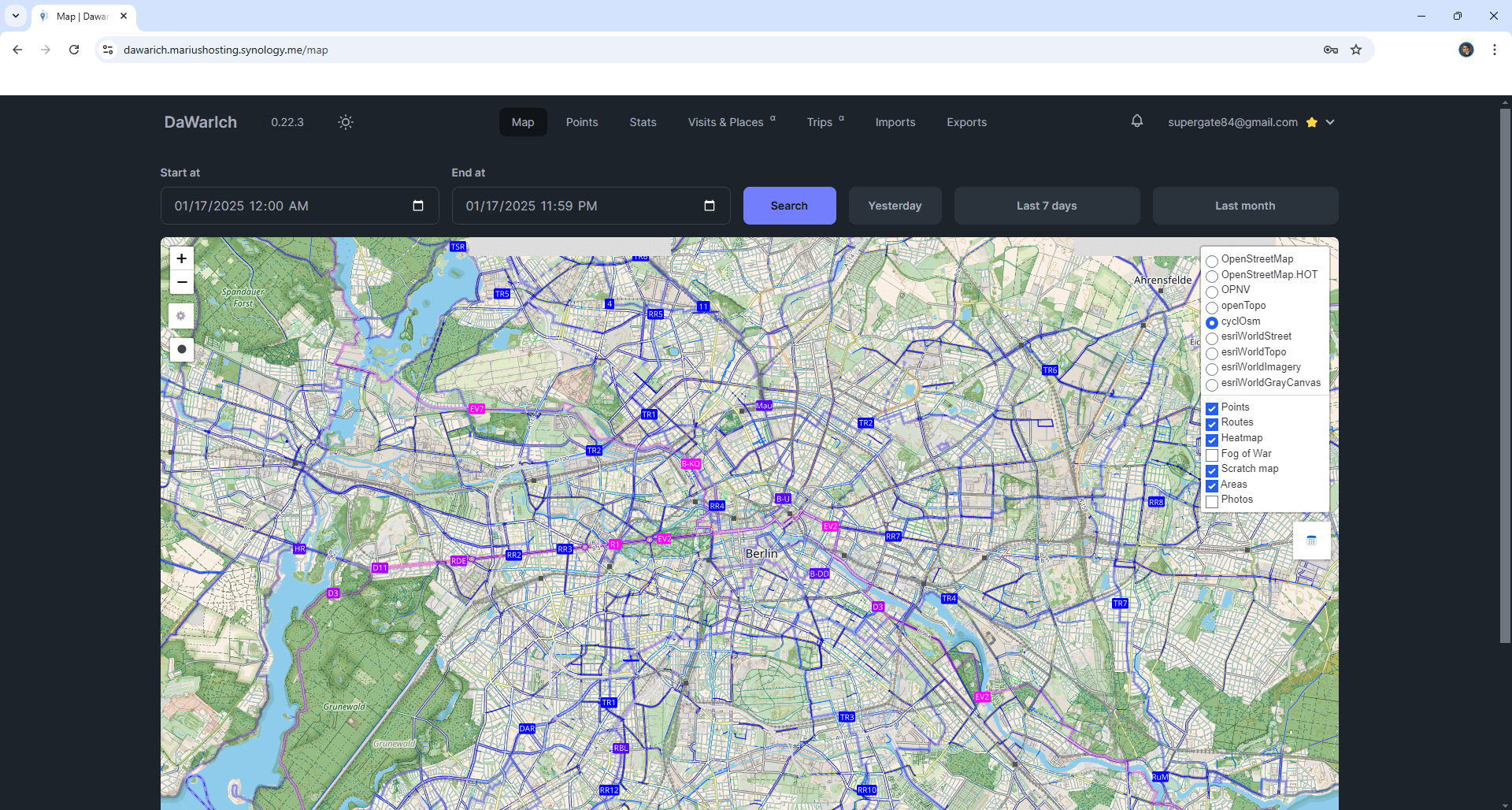
Enjoy Dawarich!
If you encounter issues by using this container, make sure to check out the Common Docker issues article.
Note: Can I run Docker on my Synology NAS? See the supported models.
Note: How to Back Up Docker Containers on your Synology NAS.
Note: Find out how to update the Dawarich container with the latest image.
Note: How to Free Disk Space on Your NAS if You Run Docker.
Note: How to Schedule Start & Stop For Docker Containers.
Note: How to Activate Email Notifications.
Note: How to Add Access Control Profile on Your NAS.
Note: How to Change Docker Containers Restart Policy.
Note: How to Use Docker Containers With VPN.
Note: Convert Docker Run Into Docker Compose.
Note: How to Clean Docker.
Note: How to Clean Docker Automatically.
Note: Best Practices When Using Docker and DDNS.
Note: Some Docker Containers Need WebSocket.
Note: Find out the Best NAS Models For Docker.
This post was updated on Sunday / December 21st, 2025 at 2:50 PM
